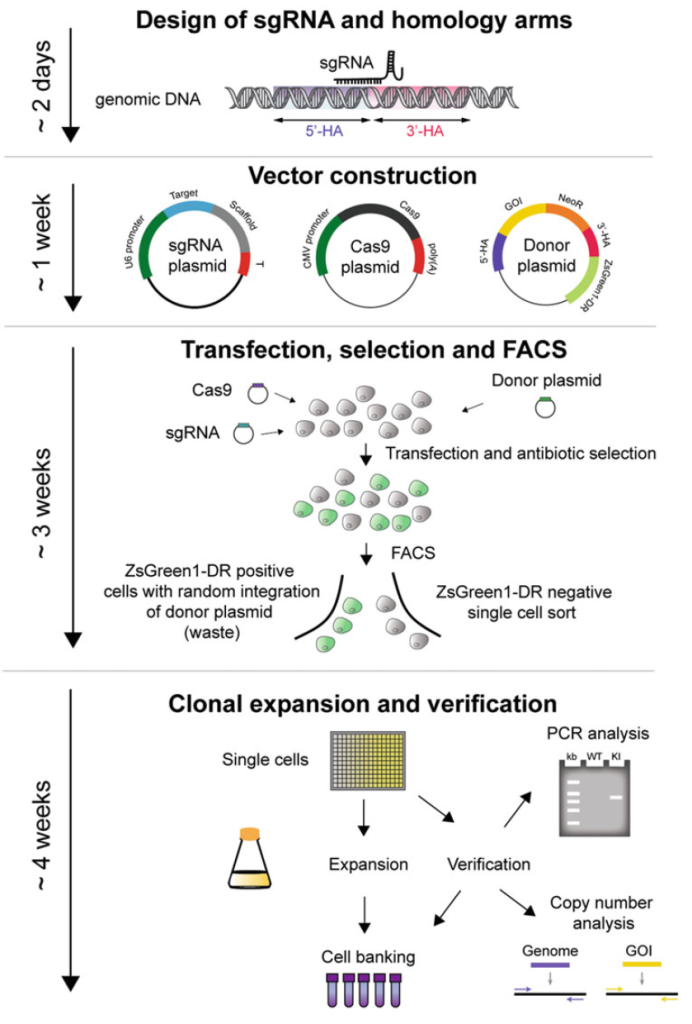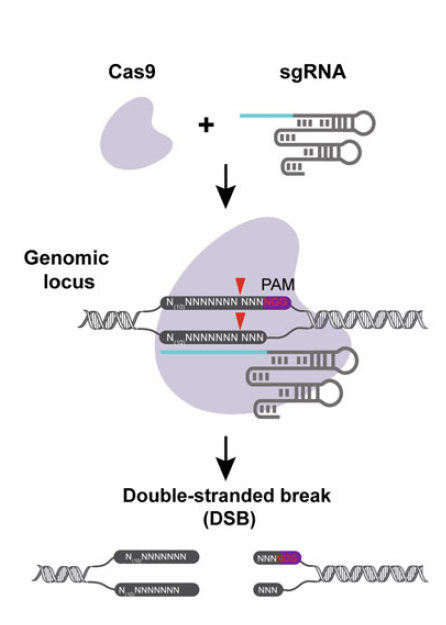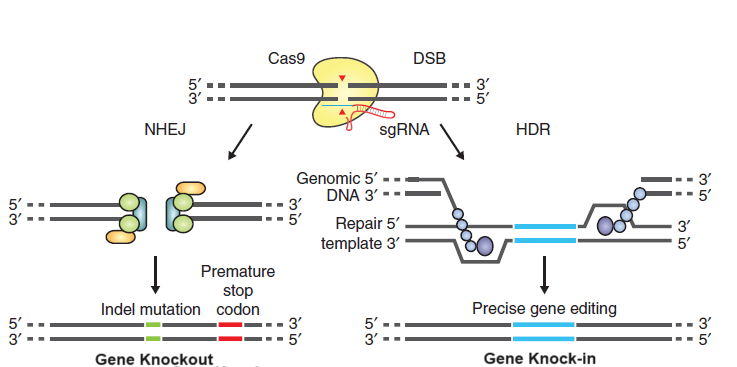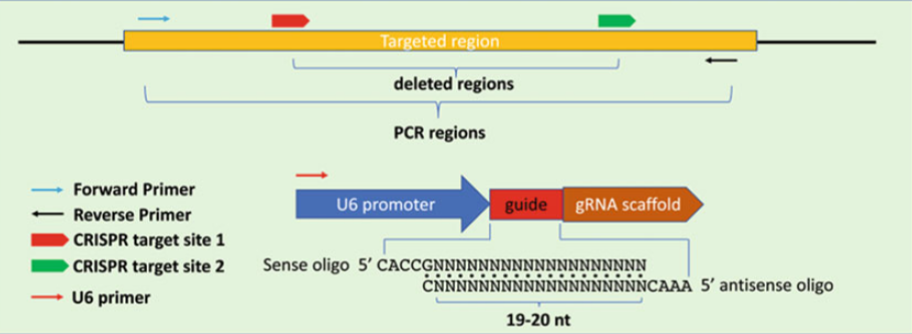Genome Editing Knock-out (KO) and Knockin (KI) Cell Lines Generation
The emergence of CRISPR/Cas9 system as a precise and affordable method for genome editing has prompted its rapid adoption for the targeted integration/knockin and knockout of transgenes in many cell lines, such as Chinese hamster ovary (CHO) and human HEK293 cells. Site recognition in the CRISPR/Cas9 system is carried out within a Cas9 nuclease/sgRNA complex via base pairing between CRISPR RNA (crRNA) of sgRNA and target locus in sequence-specific manner. Upon target recognition, Cas9 becomes activated, generating a blunt double-stranded break (DSB) between 3rd and 4th base upstream from the PAM site.
The DSB can be subsequently repaired by endogenouse cellular pathways, NHEJ (non-homologous end-joining) generating indel mutations for the knockout generation at the targeted locus, or HDR (homology-directed repair) generating knockin at the targeted locus under DNA repair template (GOI in between two homology arms). Specific recognition of sgRNA to the target sequence makes CRISP/Cas9 genome editing technology highly specific, easier to design, multiplexed editing versatility, have fostered the use and evolution of CRISP/Cas9 as a tool over previous systems, such as ZFNs and TALENs.
Fusion Biolabs provide:
Fusion Biolabs’ CRISPR/Cas9 system offers proven technology with unparalleled support and expertise to make your use of this system easy and successful from the start.
- Custom gene point mutation, gene replacement, gene tagging, gene deletion and small DNA insertion services;
- Custom knock-in/knock-out cell line generation services;
I. Generation of Knockout cell lines using CRISPR/Cas9 system
Fusion Biolabs have developed our customized platform (the design of gRNAs, gRNA expression plasmid cloning, transfection, cell culturing, positive clone selection and screening) for rapid and efficient generation of gene knockout or deletion cells using CRISP/Cas9 within the time span of 4 weeks.
The Main Procedures for generating gene knockout cell line by CRISPR/Cas9
Timeline: 4-5 weeks
- Targeted regions in the targeted cells PCR amplification and Sanger sequencing
- sgRNA design and sgRNA plasmid construction
- SgRNA plasmid sequencing validation and Cas9 expression plasmid preparation
- Cell transfection
- Knockout cell sorting and PCR validation
- knockout monoclonal cell expansion and cell colony PCR validation by Sanger sequencing
- Knockout cell line delivery
II. Generation of genome editing/Knockin cell lines using CRISPR/Cas9 system
Fusion Biolabs has developed our customized platform: the design of sequences of sgRNAs and gene of interest (GOI) donor sequences, sgRNA plasmids and donor expression plasmid cloning, transfection, cell culturing, positive clone selection and screening) for rapid and efficient generation of genome editing gene knockin cells using CRISP/Cas9 within the time span of 8 weeks.

The Main Procedures for generating gene knock-in cell line by CRISPR/Cas9
Timeline: 8-9 weeks

- Target sgRNA and homology arms design, sgRNA plasmid and donor plasmid construction
- SgRNA plasmid, Donor plasmid sequencing validation and Cas9 expression plasmid preparation
- Cell transfection
- Knockin cell sorting and PCR validation
- knockin monoclonal cell expansion and cell colony PCR validation by Sanger sequencing
- Knockin cell line delivery
Ordering Information
Custom Genome Editing Cell Lines Services
| Catalog | Description | Unit | Price |
|---|---|---|---|
| 72101 | Custom knock-out cell line Generation via CRISP/Cas9 system | 1 Project | Contact Us |
| 72102 | Custom knock-in cell line Generation via CRISP/Cas9 system | 1 Project | Contact Us |
For complex projects, please fill the form for details!



